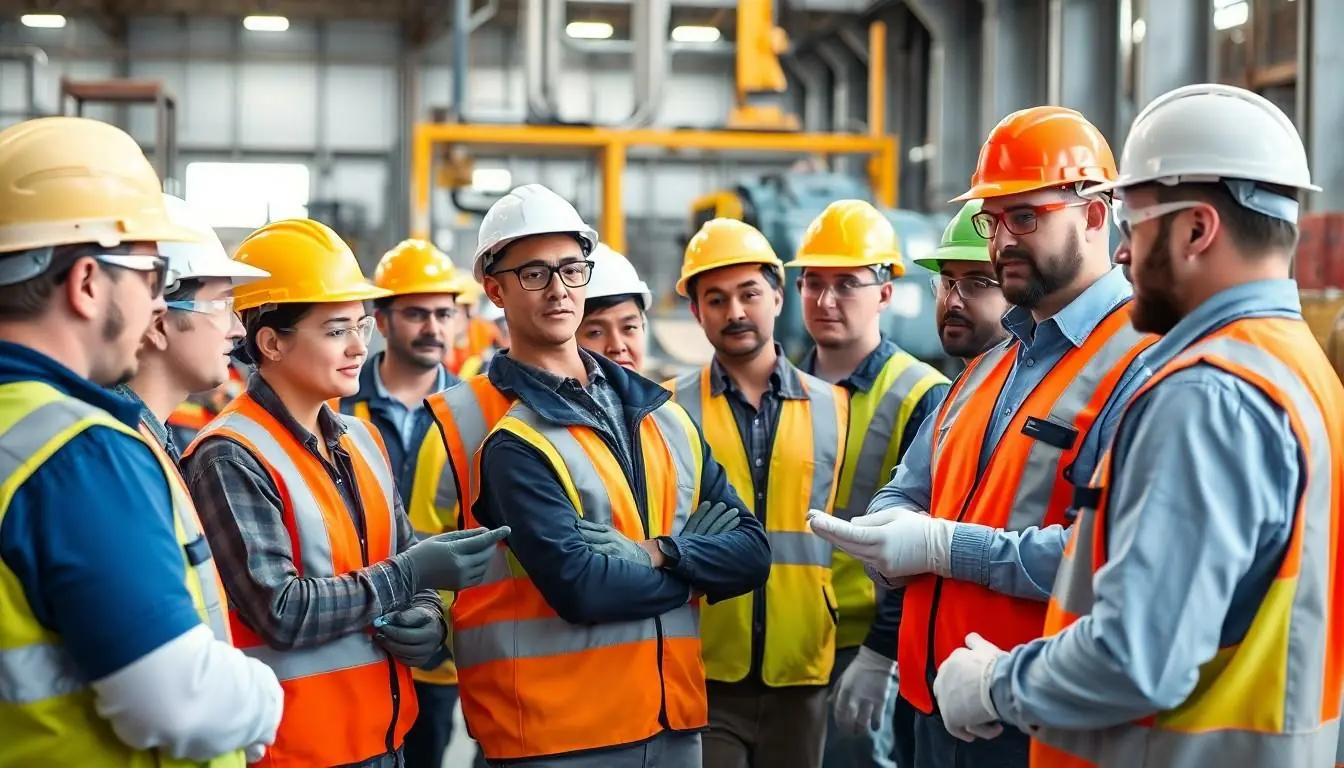In a world where safety often plays second fiddle to convenience, the lurking dangers of physical and health hazards can feel like a game of whack-a-mole. Just when you think you’ve nailed one down, another pops up to keep you on your toes. Fortunately, with the right measures in place, many of these hazards can be tamed—or at least kept at bay—like a misbehaving puppy. But what if there’s a sneaky exception that slips through the cracks?
Table of Contents
ToggleUnderstanding Physical And Health Hazards
Physical hazards pose risks such as slips, trips, falls, and equipment-related injuries. Health hazards encompass exposures that can lead to chronic conditions or acute illnesses, including hazardous chemicals and biological agents. Effective control measures exist to address these dangers, yet some remain challenging.
Hazard identification serves as a crucial first step in managing risks. Employers conduct thorough assessments to recognize potential physical and health hazards within the workplace. Accurate identification enables targeted interventions.
Mitigation strategies like engineering controls limit worker exposure to hazards. Implementing proper machine guards and ventilation systems significantly decreases risks. Such measures enhance workplace safety.
Regular training ensures that employees understand and can effectively manage hazards. Training programs equip workers with knowledge about safety protocols and proper use of personal protective equipment. Additionally, ongoing education helps in maintaining awareness about emerging risks.
Health monitoring plays an essential role in early detection of potential issues. Regular medical exams facilitate the identification of health conditions linked to workplace exposures. Implementing these assessments supports overall employee well-being.
In contrast, certain hazards elude control measures despite best efforts. For instance, ergonomic challenges can be difficult to fully manage. Employees may face stress and strain from repetitive tasks or poor workstation design, leading to long-term injuries.
Addressing mental health issues presents another formidable challenge. Workplace environments often induce stress, anxiety, or burnout. Fostering a supportive culture becomes vital to mitigate such risks effectively.
Key Measures For Hazard Control

Effective hazard control relies on multiple strategies tailored to specific risks. Understanding how each measure operates helps create a safer work environment.
Engineering Controls
Engineering controls focus on eliminating hazards or reducing employee exposure through physical changes. Implementing proper ventilation systems can decrease airborne contaminants, while machine guards prevent injuries during operation. Installing slip-resistant flooring minimizes the risk of falls in high-traffic areas. These measures not only enhance safety but also create a more efficient workplace.
Administrative Controls
Administrative controls involve changes in work policies and procedures to reduce risk. Instituting regular safety training sessions keeps employees informed about potential hazards. Scheduling work in ways that minimize exposure time can also effectively reduce risks. Encouraging reporting of near misses fosters a culture of safety awareness and accountability. Each of these measures helps maintain a proactive stance on workplace safety.
Personal Protective Equipment
Personal protective equipment (PPE) serves as a critical last line of defense against potential hazards. Items like gloves, goggles, and respirators protect employees from exposure to harmful substances. Ensuring that PPE fits properly increases its effectiveness in shielding workers. Regular training on the correct usage and maintenance of this equipment enhances its protective capabilities. Prioritizing PPE use plays a crucial role in overall safety strategies.
Limitations Of Conventional Measures
Conventional safety measures face inherent limitations when combating certain hazards. Understanding these constraints helps refine overall strategies.
Uncontrollable Factors
Unpredictable environmental conditions create risks that conventional measures can’t fully address. Factors like extreme weather events can heighten physical hazards, making them more prevalent in certain conditions. Biological threats, such as pandemics, also arise beyond the scope of standard control methods. These events introduce varied risks that existing measures can struggle to mitigate effectively, leading to workplace vulnerabilities. Recognizing these uncontrollable factors plays a crucial role in developing adaptive safety strategies.
Human Error
In human behavior, mistakes frequently compromise safety protocols. Even with thorough training and clear instructions, individuals may still overlook critical safety precautions. Distractions, fatigue, or stress can further contribute to lapses in judgment, resulting in accidents. Reliance on human adherence to safety measures means risks persist despite implementing various prevention strategies. Organizations must cultivate a safety-first culture to minimize the impact of human error and bolster overall workplace safety.
Addressing physical and health hazards in the workplace requires a multifaceted approach that combines hazard identification and mitigation strategies. While many risks can be effectively managed through engineering controls, administrative changes, and personal protective equipment, some challenges remain stubbornly resistant to conventional measures. Ergonomic issues and mental health concerns often defy straightforward solutions, necessitating a deeper understanding and supportive culture.
Moreover, unpredictable environmental factors and human error further complicate safety efforts. Organizations must remain vigilant and proactive in fostering a safety-first mindset among employees. By acknowledging the limitations of existing measures and addressing these elusive hazards, businesses can create a healthier and safer work environment for everyone.
